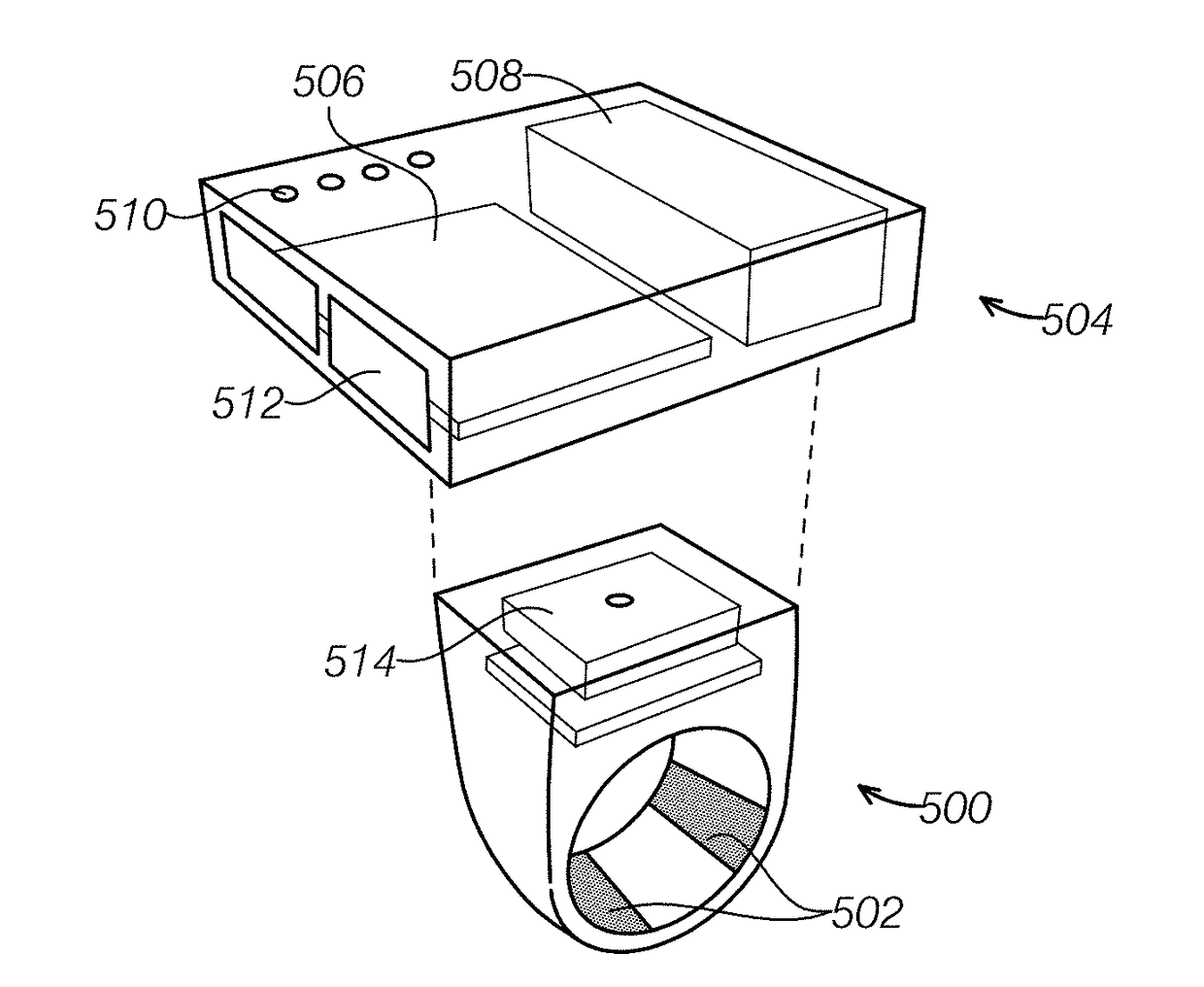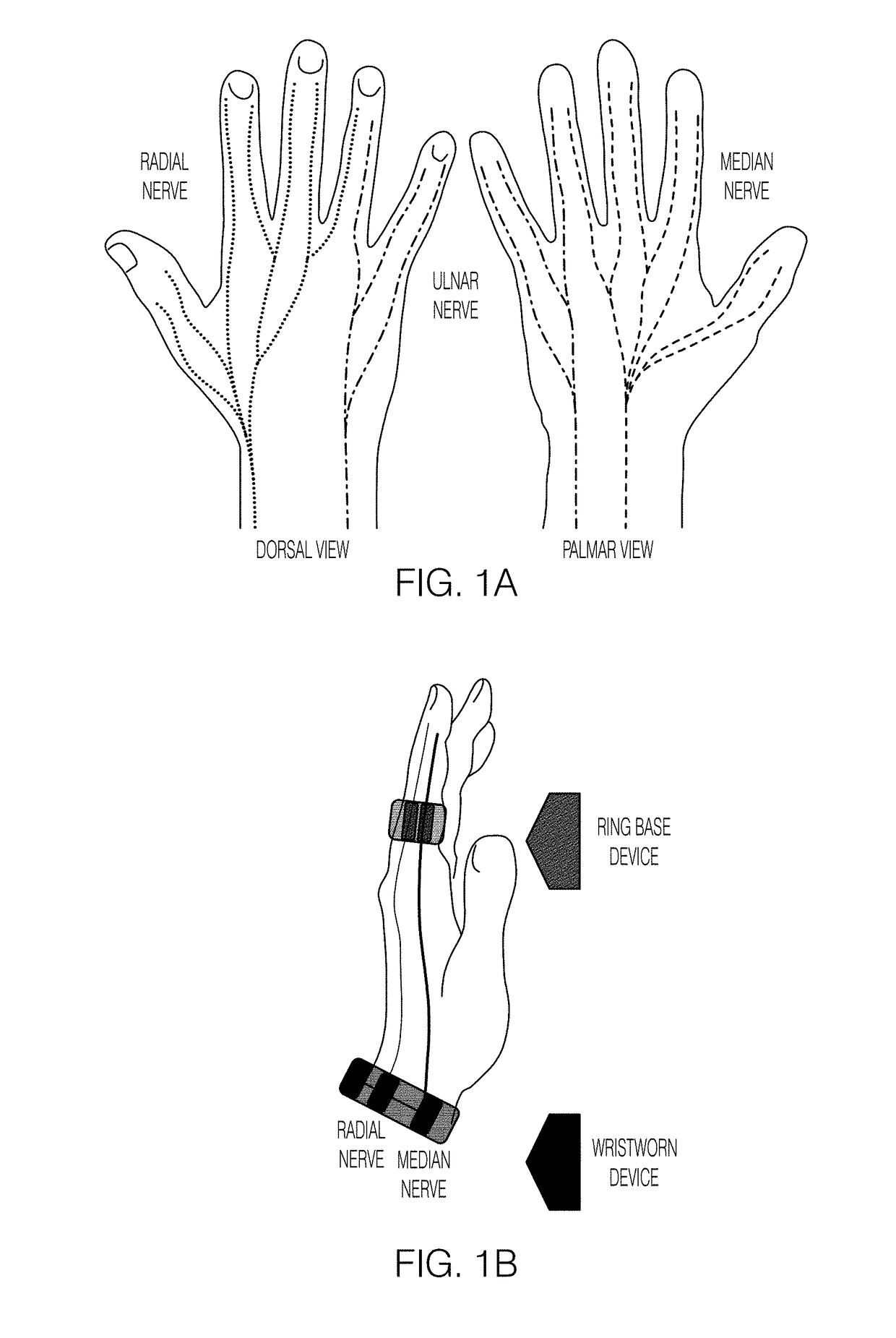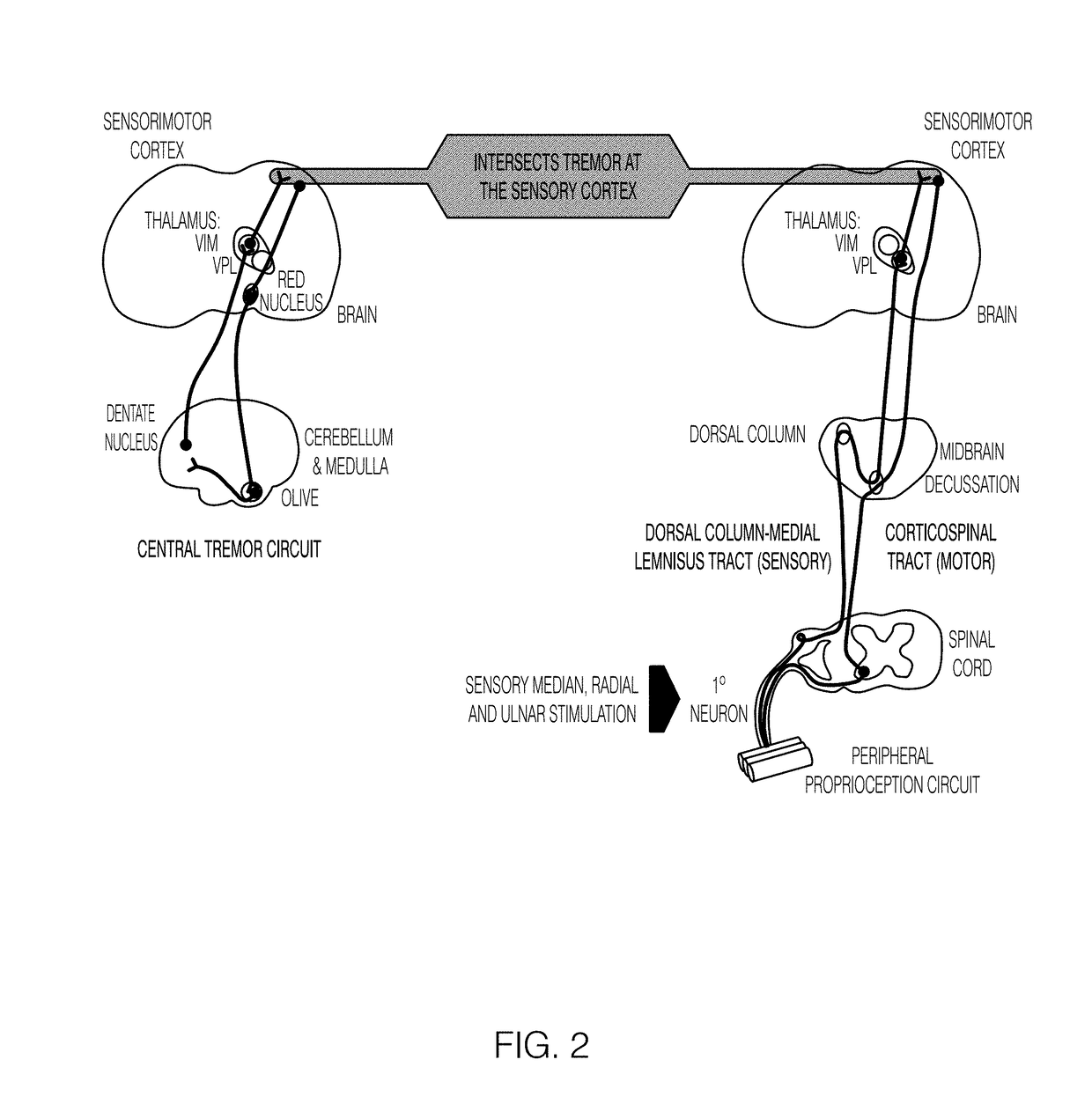Systems and methods for peripheral nerve stimulation in the finger or hand to treat hand tremors
a peripheral nerve and hand tremor technology, applied in the field of peripheral nerve stimulation systems, devices and methods to treat hand tremors, can solve the problems of difficult application of stimulation to the arm or wrist, significant tremor, and similar limitations in treatment options, so as to improve the specificity of stimulation, reduce hand tremors, and improve the effect of tremor reduction
- Summary
- Abstract
- Description
- Claims
- Application Information
AI Technical Summary
Benefits of technology
Problems solved by technology
Method used
Image
Examples
Embodiment Construction
[0085]Our invention is a device and system to measure and collect motion data, analyze said data, as to interpret how these measures may influence motion disorders, and stimulate individual peripheral nerve targets to reduce tremor. The purpose of the data analysis is to see how the measured data may influence motion disorders. The applied stimulation may or may not be modified based on the measured data.
[0086]As shown in FIGS. 5A and 5B, one embodiment is a two-part system that includes 1) a ring-like unit 500 worn on the finger that contains electrodes 502 to transcutaneously apply electrical stimulation to the branches of the median, radial, and / or ulnar nerves in the finger, and 2) a detachable stimulation power unit 504 that may contain an electrical stimulation signal generator 506, power source 508, and / or a microprocessor to control the stimulation. The detachable stimulation power unit 504 can also have a user interface that can include a display, such as LEDs 510, and butt...
PUM
 Login to View More
Login to View More Abstract
Description
Claims
Application Information
 Login to View More
Login to View More - R&D
- Intellectual Property
- Life Sciences
- Materials
- Tech Scout
- Unparalleled Data Quality
- Higher Quality Content
- 60% Fewer Hallucinations
Browse by: Latest US Patents, China's latest patents, Technical Efficacy Thesaurus, Application Domain, Technology Topic, Popular Technical Reports.
© 2025 PatSnap. All rights reserved.Legal|Privacy policy|Modern Slavery Act Transparency Statement|Sitemap|About US| Contact US: help@patsnap.com



